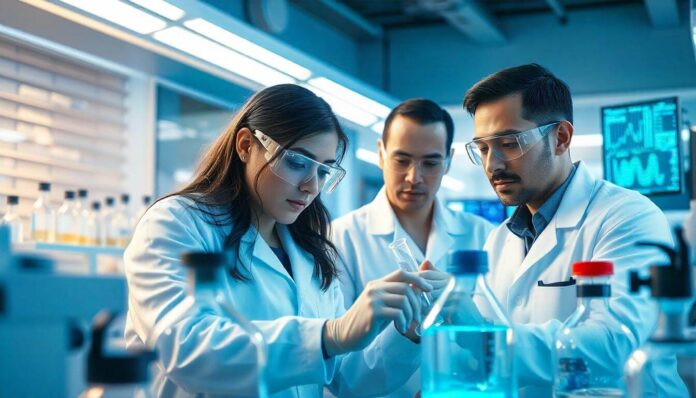Recently, there’s been an exciting shift in how we perceive and utilize substances that alter our mental states. Traditionally, psychedelics have been known for their hallucinogenic effects, transporting users to vivid, often transformative experiences. But what if these mind-altering properties could be harnessed without the psychedelic trips? This question is leading researchers and enthusiasts down a fascinating path toward non-hallucinogenic psychedelics.
The rise of non-hallucinogenic psychedelics
The biotech industry is buzzing with the development of new compounds inspired by traditional psychedelics like LSD and psilocybin. These novel substances promise the benefits associated with heightened neuroplasticity and pain reduction, minus the colorful hallucinations. Bright Minds Biosciences recently announced a compound that interacts with serotonin receptors similar to psilocybin but doesn’t cause visual distortions. Early reports suggest this drug can reduce pain as effectively as morphine while maintaining a clear head.
This innovation opens up a world of possibilities. Imagine harnessing the therapeutic potential of psychedelics—such as enhanced mood, creativity, and cognitive function—without the risk of disorienting hallucinations. For many, this means accessing parts of their psyche in profound yet manageable ways in everyday settings.
A different kind of trip
When you think about psychonauts—the explorers of inner space—you might imagine them navigating vivid dreamscapes on substances like DMT or mescaline. However, today’s psychonauts are increasingly turning to compounds that create subtle shifts in perception. Online forums brim with experiences from individuals who have tried these new drugs, describing sensations that range from mild euphoria to deep reflective thinking.
These subjective experiences challenge our traditional definitions of a “trip.” If one feels a sense of connectedness or achieves a breakthrough in personal insight, is it any less valid because there are no kaleidoscopic visuals involved? According to researchers like Mike Jay, it may all fall under the same umbrella, blending the lines between side effects and the core experiences themselves.
The role of serotonin receptors
Much of the current focus on developing non-hallucinogenic psychedelics revolves around serotonin receptors. Classic psychedelics typically target these receptors, particularly 5-HT2A, to produce their effects. However, not all serotonin-related activity results in visual or auditory hallucinations. By tweaking molecular structures, scientists aim to retain the beneficial aspects of these interactions while eliminating the more disruptive elements.
For example, tabernanthalog, a molecule that mimics ibogaine, offers increased attention and mindfulness without inducing the intense visions commonly associated with its parent compound. Users report feeling more present and connected, akin to the calm alertness after a strong cup of coffee, but amplified.
Psychedelic experiences redefined
As the scope of what constitutes a psychedelic experience expands, so does the need to redefine our metrics for measuring these encounters. Traditional scales like the “oceanic boundlessness” fail to capture the nuances introduced by non-hallucinogenic variants. Researchers at Johns Hopkins argue for a more sophisticated rubric that can accurately reflect the diverse array of experiences.
This evolving understanding of psychedelics is crucial for advancing therapeutic applications. Whether treating depression, PTSD, or simply enhancing well-being, knowing precisely how these substances affect us helps in fine-tuning treatment protocols. It also dispels the myth that profound changes in consciousness require elaborate visual journeys. Simple adjustments in thought processes or emotional state can be just as impactful.
Implications for daily life
Imagine integrating non-hallucinogenic psychedelics into your routine, much like you would with vitamins or supplements. Chuck Raison, a psychiatry professor at the University of Wisconsin at Madison, points out that many of us already modify our consciousness through everyday substances like caffeine and alcohol. Psychedelic-inspired drugs could soon join this regimen, offering tools for mental enhancement without the rollercoaster ride.
The ability to maintain control and clarity while benefiting from these compounds’ uplifting and therapeutic properties makes them particularly appealing. As research pushes forward, the day when you can pop a pill for a gentle mood lift or creative boost seems closer than ever.
Pushing boundaries
The quest to refine psychedelics into non-hallucinogenic forms is driving radical changes in our approach to mental health and personal development. Beyond merely spectating trippy visuals, we’re seeking deeper, lasting impacts on our minds. From precise pain management to lifelong gains in emotional resilience, the untapped potential is vast.
If we embrace the full spectrum of what these substances can offer, guided by rigorous scientific inquiry, the future holds promising avenues for both individual and collective growth. This isn’t just about escaping reality—it’s about enhancing how we engage with it on every level.


